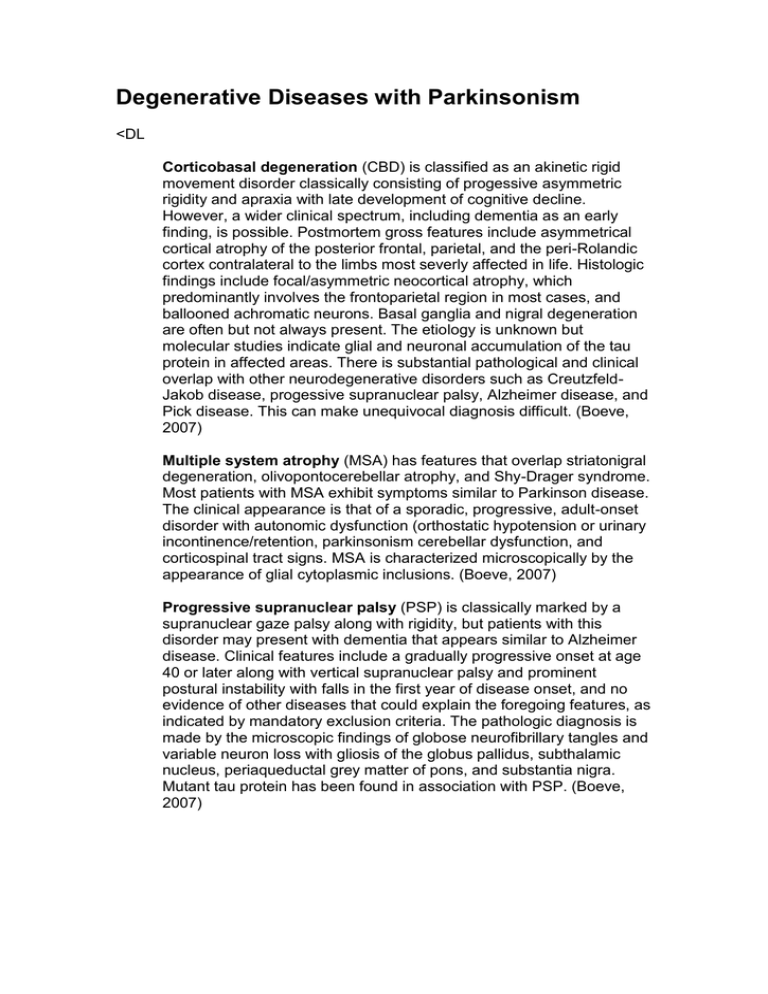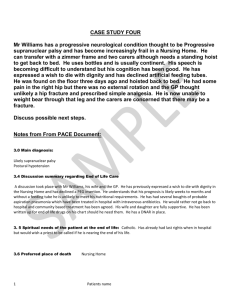Degenerative Diseases with Parkinsonism
advertisement

Degenerative Diseases with Parkinsonism <DL Corticobasal degeneration (CBD) is classified as an akinetic rigid movement disorder classically consisting of progessive asymmetric rigidity and apraxia with late development of cognitive decline. However, a wider clinical spectrum, including dementia as an early finding, is possible. Postmortem gross features include asymmetrical cortical atrophy of the posterior frontal, parietal, and the peri-Rolandic cortex contralateral to the limbs most severly affected in life. Histologic findings include focal/asymmetric neocortical atrophy, which predominantly involves the frontoparietal region in most cases, and ballooned achromatic neurons. Basal ganglia and nigral degeneration are often but not always present. The etiology is unknown but molecular studies indicate glial and neuronal accumulation of the tau protein in affected areas. There is substantial pathological and clinical overlap with other neurodegenerative disorders such as CreutzfeldJakob disease, progessive supranuclear palsy, Alzheimer disease, and Pick disease. This can make unequivocal diagnosis difficult. (Boeve, 2007) Multiple system atrophy (MSA) has features that overlap striatonigral degeneration, olivopontocerebellar atrophy, and Shy-Drager syndrome. Most patients with MSA exhibit symptoms similar to Parkinson disease. The clinical appearance is that of a sporadic, progressive, adult-onset disorder with autonomic dysfunction (orthostatic hypotension or urinary incontinence/retention, parkinsonism cerebellar dysfunction, and corticospinal tract signs. MSA is characterized microscopically by the appearance of glial cytoplasmic inclusions. (Boeve, 2007) Progressive supranuclear palsy (PSP) is classically marked by a supranuclear gaze palsy along with rigidity, but patients with this disorder may present with dementia that appears similar to Alzheimer disease. Clinical features include a gradually progressive onset at age 40 or later along with vertical supranuclear palsy and prominent postural instability with falls in the first year of disease onset, and no evidence of other diseases that could explain the foregoing features, as indicated by mandatory exclusion criteria. The pathologic diagnosis is made by the microscopic findings of globose neurofibrillary tangles and variable neuron loss with gliosis of the globus pallidus, subthalamic nucleus, periaqueductal grey matter of pons, and substantia nigra. Mutant tau protein has been found in association with PSP. (Boeve, 2007)



